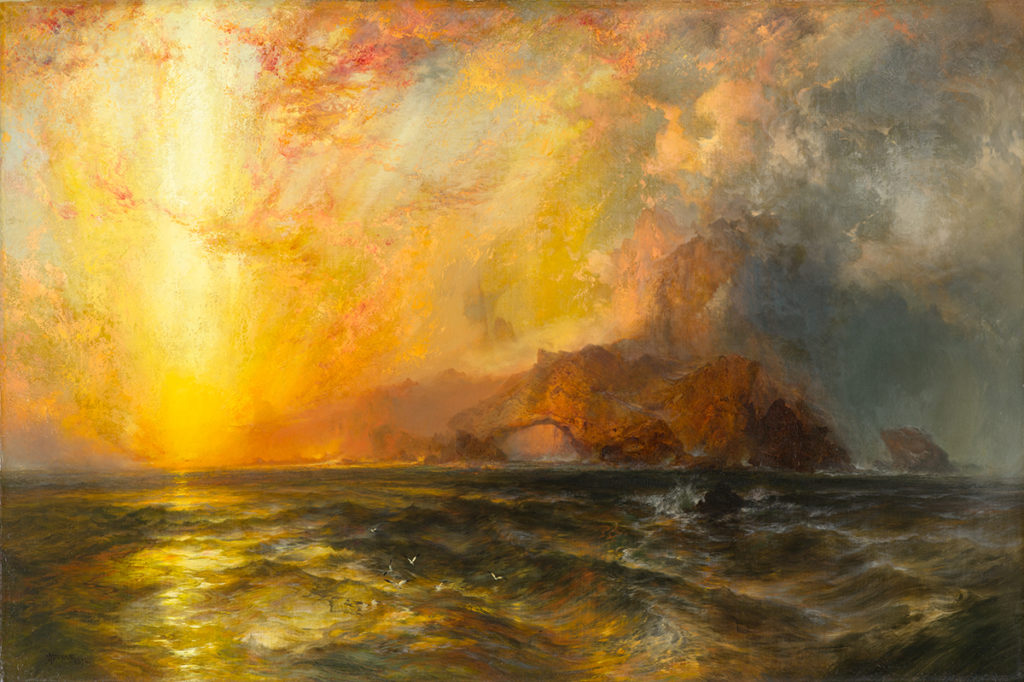View the study sheet here. Watch the recording here.

It would be nice if one could live one’s life as one reads a book, divided clearly into chapters. Perhaps even with headings for each, describing what we are about to encounter. Or maybe be able to approach each moment the way we drive our cars, with road signs marking what lies ahead: Dead End; Yield; Merge.
Torah prepares us to live in the absence of such clear divisions and signposts. Its scroll consists of one word after another. No punctuation. No capitalization. Not even any vowels. We may take for granted that Torah is divided into fifty-four portions, yet that was an eventual human determination not prescribed by the Torah itself. And we avail ourselves of the convenience of saying that, for example, this week’s portion begins with chapter 32 thanks to decisions made by Stephen Langton, Archbishop of Canterbury, in 1227.
Mostly, we live moment to moment without alerts as to either their full significance or consequence. It is difficult to grasp the total meaning and impact of the moment while we are in the middle of it. As the Danish philosopher Søren Kierkegaard wrote, “Life can only be understood backwards; but it must be lived forwards.” Some of the most profound chapters of our lives won’t even get a title until much later down the road.
Still, Torah teaches, if we take hold of moments of uncertainty and embrace their discomforts, we can discover within ourselves strengths we may otherwise not have known. Parshat Vayishlach chronicles Jacob’s journey from scheming child to young man making his way in the world to wiser soul honoring his origins and his promise.
In the middle is a wrestling match, between Jacob’s base and apex selves, between his self-centered anxieties and his sacred possibilities. The encounter transforms Jacob, symbolized both physically, as evidenced by his injured hip, and spiritually, as represented by his change of name from Jacob to Israel (“one who has persevered with God”).
The mid-twentieth century German rabbi Benno Jacob encourages us to view this transformation as an inner initiated act by Jacob: “God answers a person’s prayers if the person prays by searching himself, becoming his own opponent.” The Hasidic teacher Sefat Emet identifies the divine as that which enables us to be the power for our own re-creation: “God will make Jacob accomplice in the benign self-creation of Israel.” In Sefat Emet’s reading, it is not external God but Jacob’s internal divine that proclaims the emergence of the new self Israel.
Psychologist Dr. Margie Warrell identifies two fundamental responses to a crisis in our life. One is to rant against the unfairness of it all. To lay blame, soak in self-pity and let fear consume our thinking and dial up our stress. The other, she writes, is “to look within ourselves for the certainty we seek, embracing the rawness of our emotions while aligning ourselves to values we want our lives to stand for.” While the result may not change anything in the world around us, it can change everything in the world within us.
Thomas Moran was an American artist associated primarily with grand landscapes of the American West. Pictured here is his painting Fiercely the red sun descending burned his way along the heavens. The title is a verse from a poem by Henry Wadsworth Longfellow. In both its subject matter and its style the painting is an engagement between two worlds.
Heaven and earth meet. The sun descends, bringing fire to watery environs. There is darkness and a rough sea on the right. On the left are light and calmer seas. A flock of birds flies from the dark side to the light. An arch, a structure bridging realms, captures the middle. The incandescence of the sun describes the sublimity of nature, evoking a sense of both awe and terror. What will prevail in this world: despair or hope?
Two styles also meet in Moran’s painting. The first is that of Luminism, a style used primarily in the United States that focused on grand landscapes. It paid great attention to detail. Brushstrokes were hidden, effecting almost a silence on the canvass. Luminist artists were greatly influenced by the Transcendentalists such as Emerson and Thoreau, for whom immersion in nature promoted knowledge of self and the divine.
Also appearing on the canvass is a more modern style, Impressionism. That movement, by contrast, emphasized lack of detail and brought attention to the artist’s brushstrokes. Impressionism embraced the subjective power of the individual and the dynamic energy within nature.
This meeting of styles – the coolness of Luminism and the heat of Impressionism – finds its visual narrative in the kissing of fire and water. What will emerge?
In Torah’s narrative, the encounter between Jacob’s lower and higher aspects results most immediately in a reconciliation with his brother Esau. Yet, that is followed by the encounter between Jacob’s daughter Dina and Shechem the Hivite, the infuriated aggrieved response by her brothers, Jacob’s silence to the incident, and the violent assault on the city of Shechem by Jacob’s sons.
Moran’s painting is an invitation to reflect on the landscapes of our own lives, and the possibilities inherent within them. Torah’s narrative reminds us that one, or even two, encounters with the sublime do not guarantee a permanent transformation of self. Uncertainties and the crises they can engender are a part of life. And so is our ability to engage them in a way that accesses new realms of courage, resilience and compassion.
Join us here at 7:00 p.m. (PT) Thursday November 30 as we explore when the sublime and mundane embrace.









